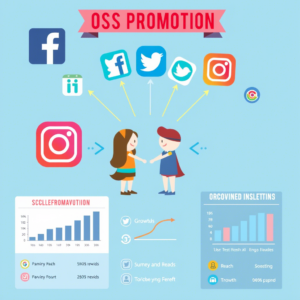In today’s competitive business landscape, standing out isn’t just about offering great products or services—it’s about proving your value. One of the most powerful tools for demonstrating credibility and building trust is the case study.
A well-crafted case study tells a compelling story that showcases how you’ve helped real clients achieve tangible results. But what makes an effective case study? And how can you use them strategically to grow your brand? In this article, we’ll explore why case studies matter, how they work, and provide actionable tips to create impactful ones.
By the end, you’ll understand exactly how to leverage these stories to win over potential customers and establish long-term relationships.
Let’s dive in!
Why Case Studies Are Essential for Your Business
Case studies aren’t just another marketing tool—they’re a bridge between you and your audience. They allow prospects to see firsthand evidence of your capabilities by sharing specific examples of past successes. This approach builds trust because it moves beyond generic claims like “we’re the best” and instead says, “here’s proof.”
Research shows that consumers are more likely to make decisions based on social proof—testimonials, reviews, and case studies. For instance, according to HubSpot, 70% of buyers say they rely heavily on customer testimonials when making purchasing decisions. When done right, a case study provides detailed insights into challenges faced, solutions implemented, and measurable outcomes achieved.
To get started with creating valuable case studies, consider focusing on three key elements: clarity, relevance, and authenticity. Clarity ensures your message resonates; relevance connects your story to the reader’s needs; and authenticity builds genuine trust.
Crafting Compelling Stories That Resonate
A good case study starts with identifying the right story to tell. Not every client interaction will translate into a compelling narrative, so choose wisely. Look for projects where:
The problem was clear : The challenge should be relatable to your target audience.
The solution was innovative : Highlight unique approaches that set you apart from competitors.
The outcome was measurable : Quantifiable results (e.g., increased revenue, reduced costs) add credibility.
For example, imagine a small business owner who struggled with outdated website design. By partnering with a web development agency, their site saw a 40% increase in traffic within six months. This kind of measurable success not only grabs attention but also demonstrates expertise.
When writing your case study, follow a simple structure:
- Introduction : Briefly introduce the client and their challenge.
- Problem Statement : Clearly define the issue.
- Solution Provided : Explain the steps taken to address the problem.
- Results Achieved : Share quantifiable outcomes.
Remember, storytelling is key. Use vivid language to paint a picture of the transformation process. Instead of saying, “We improved efficiency,” try something like, “Our streamlined workflow cut production time by half, allowing the team to focus on high-priority tasks.”
Making Your Case Study Actionable and Relevant
Once you have a solid framework, think about how to make your case study actionable for your audience. Simply presenting data won’t cut it—you need to show readers how they can apply similar strategies to their own situations.
Here are some practical tips:
Break Down Complex Ideas : If your solution involves technical details, simplify them using analogies or step-by-step guides.
Include Quotes : Incorporating direct quotes from satisfied clients adds authenticity and personalizes the story.
Highlight Transferable Skills : Emphasize aspects of the project that could benefit other businesses, such as cost-saving techniques or time management strategies.
For example, if your case study focuses on digital marketing, include actionable takeaways like, “By targeting niche audiences through Google Ads, our client reduced ad spend by 25% while increasing conversions by 30%.” These specifics give readers clear next steps.
Additionally, align your case study with current industry trends. If automation is booming, highlight how your solution incorporates AI-driven tools to enhance productivity. Staying relevant keeps your content fresh and engaging.
Enhancing Credibility Through Data and Metrics
Numbers don’t lie—and neither should your case studies. To truly build trust, back up your claims with hard data. Whether it’s financial gains, operational improvements, or customer satisfaction scores, metrics lend weight to your narrative.
However, avoid overwhelming your audience with too many statistics. Focus on the ones that matter most. Ask yourself:
- What did the client care about most?
- Which numbers demonstrate the biggest impact?
For instance, rather than listing every metric, prioritize the ones that directly relate to the client’s goals. A software company might emphasize user engagement rates, while a retail store would focus on sales growth.
Visual aids like charts and infographics can also enhance understanding. Suppose your case study highlights a 50% reduction in operational costs. Presenting this information in a bar graph comparing before-and-after scenarios makes the improvement instantly clear.
Moreover, ensure your data comes from credible sources. If possible, include third-party validations or certifications to further bolster your argument.
Expanding Reach Through Strategic Distribution
Creating a stellar case study is only half the battle. To maximize its impact, you must distribute it effectively. Here’s how:
Optimize for SEO : Integrate relevant keywords naturally throughout the text. For example, if your case study revolves around e-commerce optimization, include terms like “online store conversion rate” or “digital marketing strategy.”
Leverage Multiple Channels : Share your case study across platforms such as your blog, email newsletters, LinkedIn, and even YouTube (via video summaries). Each channel caters to different preferences, ensuring broader reach.
Create Downloadable Resources : Transform your case study into a PDF or eBook format, encouraging visitors to download it in exchange for contact information. This tactic helps nurture leads and fosters ongoing engagement.
Encourage Sharing : Add social media buttons to your webpage and invite readers to share their thoughts. Positive feedback amplifies your message exponentially.
By thoughtfully distributing your case study, you amplify its influence and attract new opportunities.
Conclusion: Turning Stories Into Results
Case studies are more than just narratives—they’re strategic assets that showcase your ability to deliver value. From identifying the right stories to presenting measurable results, each step plays a crucial role in building trust and differentiating your brand. Remember, the goal isn’t merely to inform but to inspire action.
As you embark on crafting your own case studies, keep these principles in mind:
- Focus on clarity, relevance, and authenticity.
- Make your content actionable and aligned with industry trends.
- Support your claims with credible data and visual aids.
- Distribute strategically to maximize exposure.
Now it’s your turn! Have you used case studies successfully in your business? Or do you have questions about getting started? Leave a comment below or share this article with someone who could benefit from it. Together, let’s turn great stories into lasting connections.



